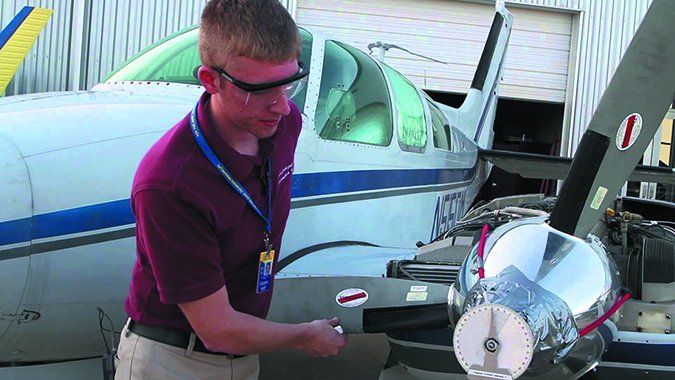The magnetos we’ve been relying on to fire our aircraft’s spark plugs may be the trailing edge of technology, yet if cared for appropriately, they are remarkably reliable. It’s the cared for part of the equation that matters—because they do require regular maintenance, otherwise some failure modes can mean engine stoppage or even catastrophic engine damage in a matter of seconds. The good news is that keeping your mags healthy usually costs less than two dollars per hour of engine operation per mag.
The purpose of a magneto is to provide enough electrical energy, at the right time, to fire a spark plug and ignite the fuel/air mixture in a cylinder. It operates on the principle that a rotating magnet will generate alternating electrical current in a coil of wire. By wrapping another coil of wire, with many more turns, around the primary coil, the voltage can be stepped up dramatically. The high-voltage current in the secondary coil—20,000 to 30,000 volts—is then mechanically directed to the appropriate spark plug as its piston reaches 20 to 24 degrees before top dead center (TDC). We’ll take a brief tour through the major components of a magneto, discussing what they do, how they can go bad, what happens when they do so and how to prolong their useful lives.
The heart of a mag is a permanent magnet, referred to as the rotor. It is rotated by a drive on the engine’s accessory case. On a four-cylinder engine, it rotates at the same RPM as the engine. On a six-cylinder engine, it spins at 1.5 times the engine speed. The magnet retains its magnetism for years, and is re-magnetized when the magneto is opened up for repair or overhaul.
As the rotor loses its magnetism, the electric current generated as it spins diminishes, leading to a less powerful spark and such things as hard starting or slight engine power loss. We strongly recommend following the manufacturers’ recommendations to pull mags at 500 hours time in service to replace them (Champion/Slick mags) or (Continental/Bendix mags) open them up, inspect and replace components as necessary (IRAN—more about IRAN later).
About 200 turns of heavy-gauge copper wire make up the primary coil. One end of the wire is grounded to the mag’s case. The other end is attached to a set of breaker points that are operated by a cam. The breaker points spend most of their life closed so that the current generated in the coil by the spinning rotor flows around the coil—producing a strong magnetic field.
Magnetic Field Collapse
The cam is set to open the breaker points the moment ignition is desired. With the circuit suddenly broken, the magnetic field in the coil collapses and causes a voltage spike in the primary coil of 200 to 300 volts.
As the breaker points begin to separate and the voltage spike occurs in the primary coil, the electrical energy will attempt to arc across the widening opening between the points—they can’t get to their full-open position instantly. Any arcing will cause the breaker points to pit and erode, one of the causes of magneto failure.
To prevent arcing across the points and cause a faster, more predictable magnetic field collapse—generating a greater voltage spike—a capacitor is included in the primary coil circuit. When the points start to open, the initial voltage spike charges the capacitor for a few microseconds rather than jumping across the widening point gap. By the time the capacitor is charged, the points are far enough apart that the 300-volt spike in the primary coil can’t jump the gap.
If the capacitor goes south, there will be arcing and pitting of the breaker points and eventual magneto failure. Breaker points do wear in normal use, however; they should last five to seven years.
Once the sudden voltage surge in the primary has been stepped up to 20,000 to 30,000 volts in the secondary coil the energy needs to be routed to the appropriate spark plug. This is carried out mechanically by a distributor. A rotating wiper electrode on a plastic gear inside the distributor passes very near—but does not touch—the individual electrodes that connect to the individual spark plug lead wires.
The distributor components, other than the wires, are made of insulating material that can withstand the high voltages involved, although the materials can be damaged by heat.
The interior of the distributor must remain almost surgically clean as contamination will allow arcing between the rotating wiper electrode and the electrodes connected to the spark plug lead wires. Arcing will cause potentially damaging engine misfire. When arcing occurs, it leaves a trail of carbon from the burned contamination. That trail of carbon facilitates further arcing—making the misfire problem worse.
High-Altitude Misfire
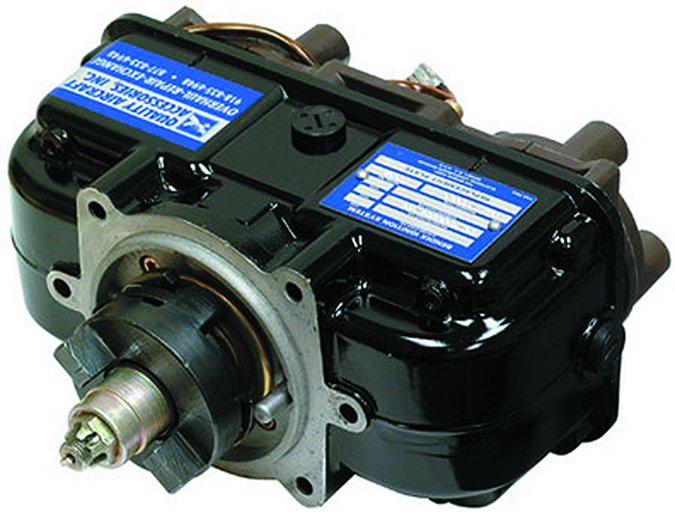
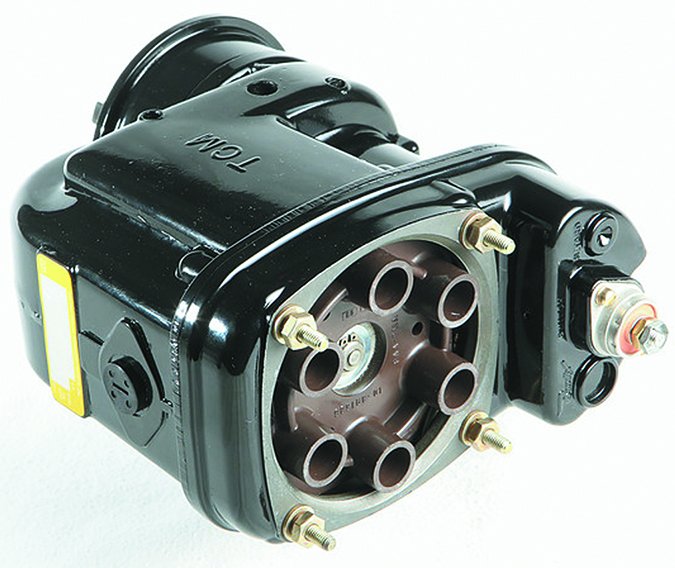
Air helps prevent arcing between the electrodes in the distributor—it’s a natural insulator. As the airplane climbs and the air gets thinner, its insulating properties diminish, making arcing and engine misfire more likely. We’ve experienced misfire when flying in the flight levels—and we can say with certainty that it’s a scary event. The immediate solution is to reduce power and descend.
Reducing the power reduces the combustion chamber pressure and makes it easier for the spark plug to fire, reducing the potential for arcing in the distributor. As the air density increases, the insulating effect increases and should stop the misfiring. Once you land, have the mags pulled and opened up to inspect for carbon tracking inside the distributors—once it’s started, it’s easier for arcing to occur the next time. Any carbon tracking should be cleaned off.
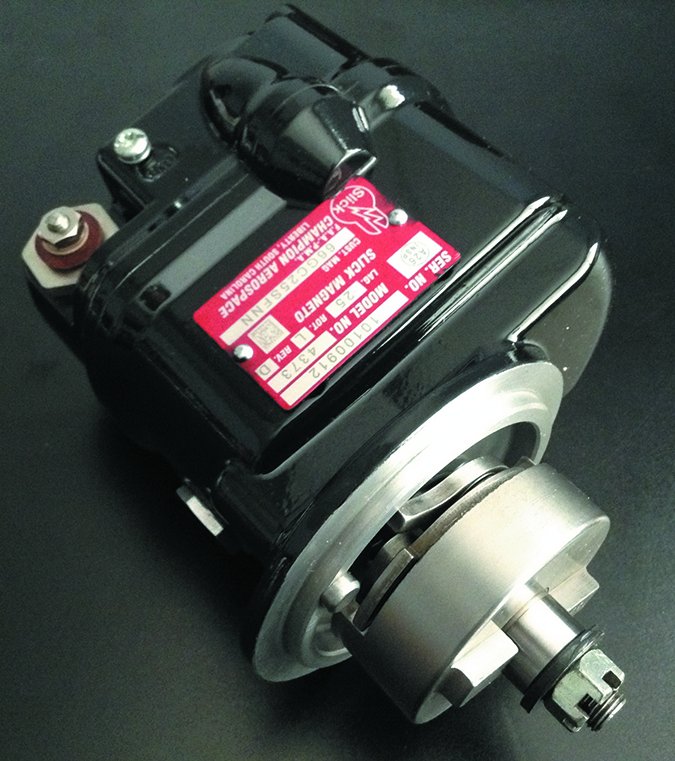
For airplanes regularly being flown in the flight levels the method of preventing misfiring is either to use the largest magneto possible—so there is the greatest distance between spark plug lead electrodes—or install pressurized magnetos. Our research indicated that using large mags is preferable, although there is not enough space on some engines. Pressurizing the mags works, but adds complexity to the system and often introduces contaminates into the mags—increasing the risk of arcing and misfiring. If the pressurization system malfunctions at high altitude, it can cause both magnetos to arc, inducing misfire. Because of contamination risks, pressurized mags need to be pulled and inspected much more frequently than their non-pressurized brethren.
Additional protection against high-altitude misfire involves tightening up the gap on the spark plugs to make it easier for the spark to occur.
Arcing within the distributor generates heat, which can damage the plastic gear that rotates the main electrode, causing misfiring. Over time, the plastic gear can become brittle and lose teeth, throwing off the timing and causing the plugs to fire at the wrong time. Pulling the mag for IRAN every 500 hours of service allows a technician to check on the health of the distributor components and replace those that are at risk.
Dealing With Misfire
If you experience an engine that starts running rough, do a mag check. If the engine smooths out on one mag, but continues to run rough on the other—shut off the mag that is causing the engine to run rough. A failure within a mag that causes the engine to misfire is potentially serious. Misfiring can lead to detonation and catastrophic failure of the engine. We’re aware of a number of accidents as we’ll as wrecked engines caused by a mag problem in which the pilot did a mag check, identified the problem as related to one magneto and then continued to run the engine on both mags. If the engine is misfiring on one mag, don’t keep using that magneto—that’s one reason why there are two mags on the engine.
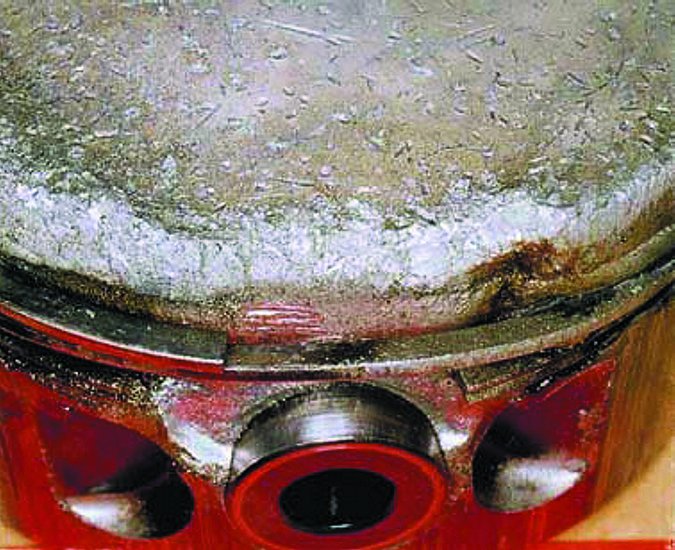
Because a magneto is always “hot,” there has to be a way to disarm it to avoid the engine firing when it’s not desired. To do so, a wire called a “P-lead” is connected from the ungrounded end of the primary coil (“P” is short for “primary”) to the ignition switch to allow it to ground the primary coil. So long as the P-lead grounds the primary coil, the mag cannot generate electrical current and fire a spark plug.
P-leads are subjected to the environment of heat and vibration within the engine cowling, so they can and do come loose or break. If the P-lead fails, that mag remains hot at all times and can cause the engine to fire if the prop is moved, a potentially dangerous event. Turning the engine off, briefly, with the ignition switch while idling just prior to shutdown will allow a broken P-lead to be detected.
Mag Check
The mag check you do during the pre-takeoff engine run-up will usually only reveal gross problems with the ignition system. Which means, if the max RPM drop or difference in RPM drop between the mags doesn’t fall within the engine manufacturer’s parameters, you’ve got something wrong that is significant enough that it needs to be dealt with prior to flight.
To find more subtle problems, before they become big ones, we recommend conducting a mag check in flight, when the ignition system is working harder, under more stress. We also highly recommend installing a digital engine monitor as it can save you more money than it costs in catching magneto problems before they become serious.
Choices
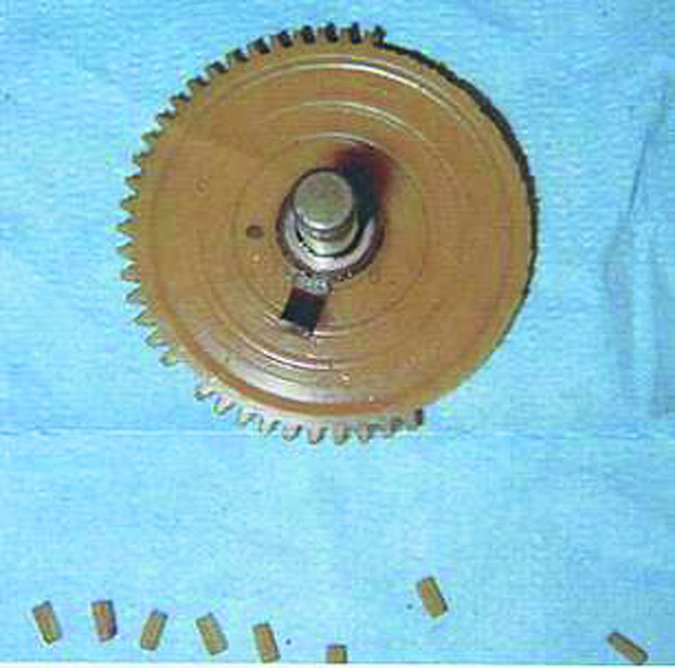
There are two manufacturers of magnetos and, depending on the type of engine on your airplane, you may or may not have a magneto choice. Bendix mags, now manufactured by Continental, come in three main types. The S-1200 series are large, robust, hot-sparking mags that are often used on airplanes that fly at high altitude—although they do not fit on all engines. The S-20/S-200 series are older, smaller-style mags that have a good reputation in service. The D-2000/D-3000 series are “dual magnetos”—two magnetos driven via a single shaft. They are only used on Lycoming engines and Continental no longer supports them. Parts availability is reportedly still good.
Slick magnetos, now manufactured by Champion, are smaller than comparable Bendix mags; however, they are significantly less expensive. Due to price, some models are considered throwaway—after 500 hours in service, the cost of buying a rebuilt exchange mag is often the same as opening up and repairing the existing mag. Our review of prices for rebuilt exchange Slick/Champion mags from the national specialty shops revealed prices in the $500 to $700 range. Prices for new Slick mags we saw were twice that of rebuilt units.
IRAN v. Overhaul
When your Bendix mags hit 500 hours in service, we recommend yanking them and sending them out to a specialized magneto shop for IRAN. For Slicks, we suggest getting an estimate for IRAN versus checking prices for rebuilt units—as they may be comparable and it can be faster to simply get rebuilt mags.
We do not recommend overhauling a magneto. To tag a magneto as overhauled, a shop must replace all of a specific list of parts, even if they are perfectly serviceable. Our research into prices showed it was generally twice as expensive to overhaul a mag as to inspect and repair and replace parts as needed. Depending on the parts that have to be replaced, we figure on $500-$700 for IRAN of a big Bendix mag—the smaller mags are less expensive. Bendix mags can be IRANed indefinitely. They do not need to be overhauled.
Conclusion
Until there is a way to affordably certify electronic ignition for general aviation aircraft, magnetos are going to continue firing spark plugs. They are reliable, robust devices that nevertheless need to be precisely timed—and the timing checked regularly. Accept that the components wear, and that a mag is not going to last until engine TBO, so plan on pulling and having them IRANed (or, for Slicks, replaced) every 500 hours.

